Pennsylvania
Pittsburgh
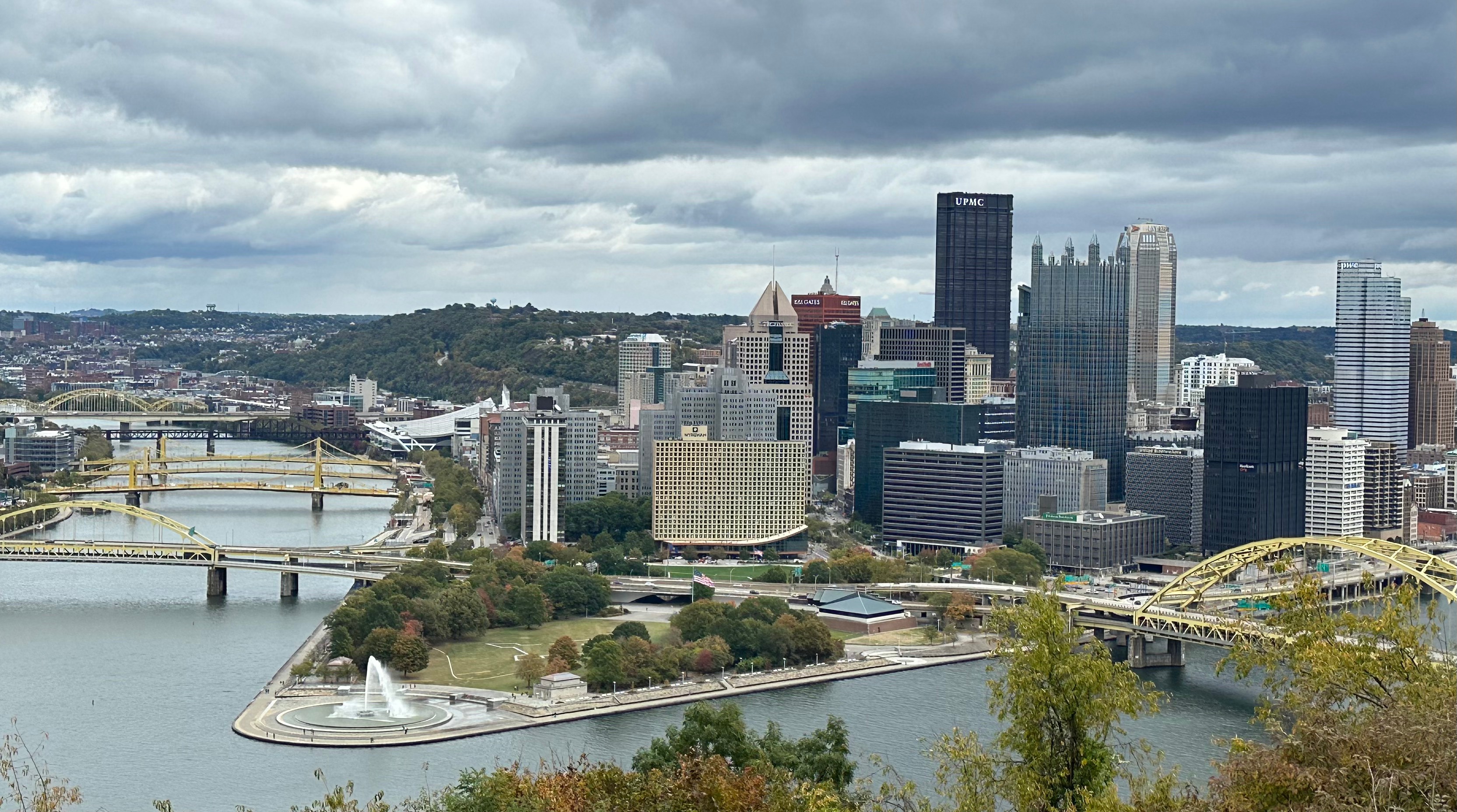
Fig. 1. The confluence of the Allegheny and Monongahela Rivers, with the “Golden Triangle” and downtown Pittsburgh. Photograph by author, October 15, 2023.
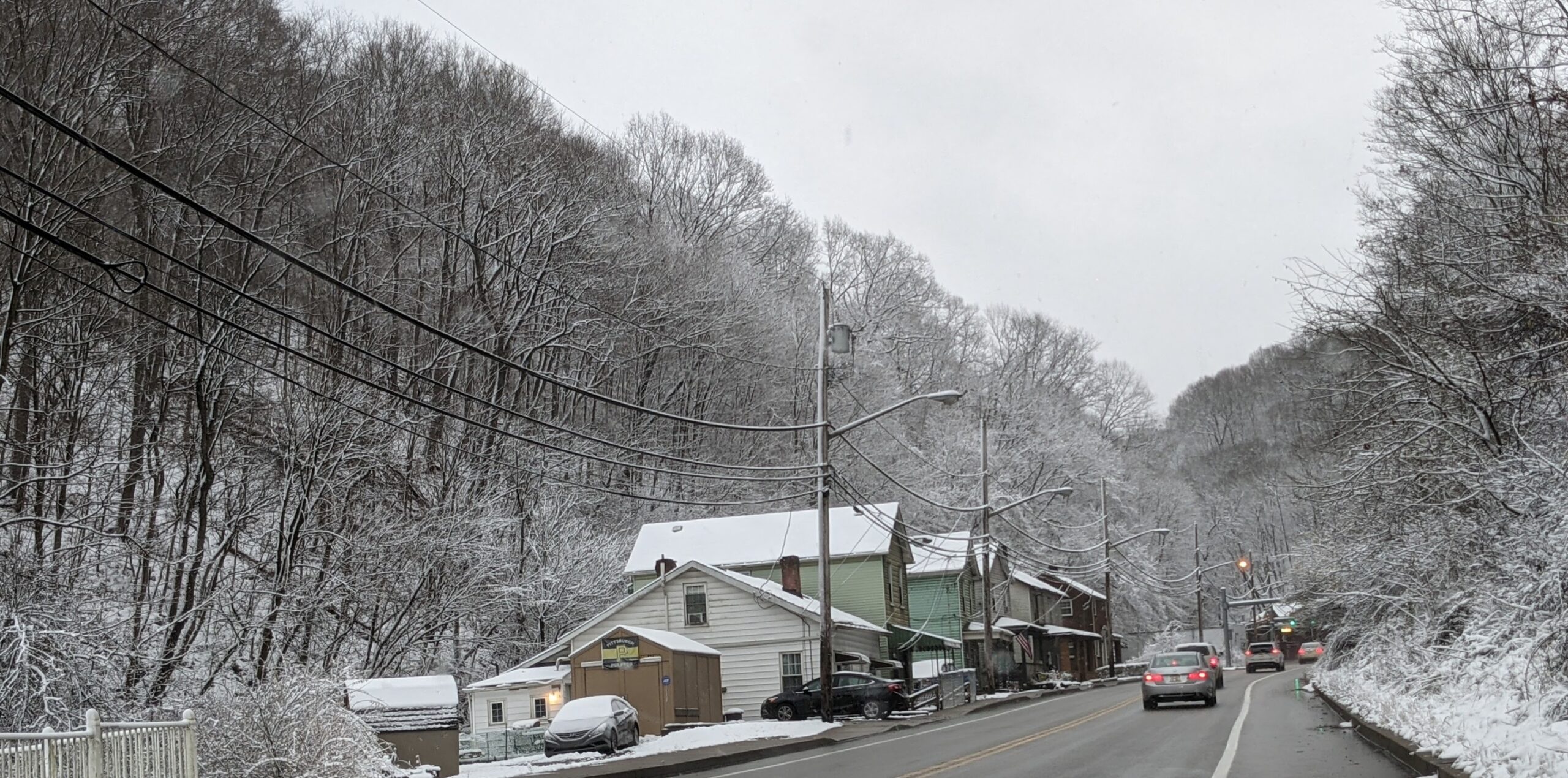
Fig. 2. Along Mifflin Road in Pittsburgh’s Hays neighborhood. Photograph by author, December 1, 2020.
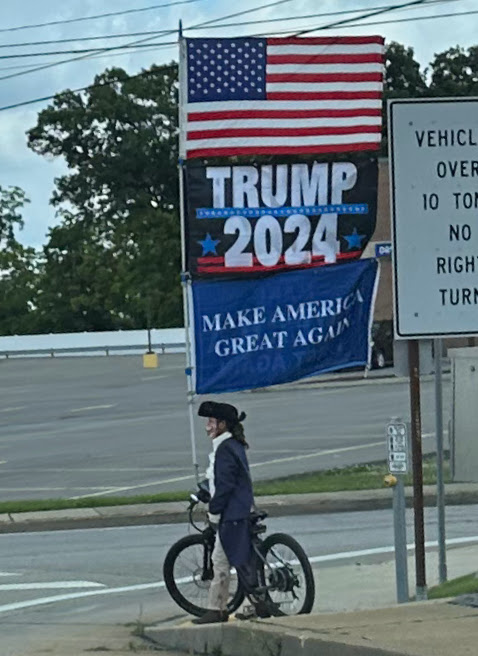
Fig. 3. I am not sure this is the same guy I’ve seen before around Pittsburgh, albeit in entirely different neighborhoods. The guy I’ve seen before 1) seemed better at striking a pose, and 2) was carrying larger flags that waved in the wind much more freely. Photograph at the intersection of McMurray and Clifton Roads in Bethel Park, by author, July 4, 2023.
In the news
- The Pittsburgh problem: race, media and everyday life in the Steel City
- Ed Gainey
- Pittsburgh settles court battle over Penn Plaza Apartments
- Infrastructure
- Man shot multiple times in Pittsburgh’s Hill District
- The South Side Problem With No Solution
- Allegheny County Jail
- Pollution
- Wilkinsburg mayor backs merger with Pittsburgh
- Pittsburgh Art Commission recommends removal of Columbus statue from Schenley Park
- State Correctional Institution at Pittsburgh
- Century III Mall
- Pittsburgh Mills
- Healthcare
- Vegan
Dani Janae, “Pittsburgh vegan scene stumbles after losing multiple restaurants,” Pittsburgh City Paper, April 27, 2022, https://www.pghcitypaper.com/pittsburgh/pittsburgh-vegan-scene-stumbles-after-losing-multiple-restaurants/Content?oid=21556088
Julia Felton, “Pittsburgh’s public safety, public works vehicle fleets in ‘dire straits,’” Pittsburgh Tribune-Review, May 23, 2023, https://triblive.com/local/pittsburghs-public-safety-public-works-vehicle-fleets-in-dire-straits/
Steve Bohnel, “Fitzgerald vetoes minimum wage hike bill, saying it violates county charter,” Pittsburgh Post-Gazette, June 14, 2023, https://www.post-gazette.com/news/politics-local/2023/06/13/fitzgerald-vetoes-minimum-wage-hike-bill-stating-it-violates-county-charter/stories/202306130122
Stephen Brumwell, “‘The Whiskey Rebellion’ Review: A Young Nation, Suddenly Tested,” review of the book Whiskey Rebellion: A Distilled History of an American Crisis by Brady J. Crytzer, Wall Street Journal, June 14, 2023, https://www.wsj.com/articles/the-whiskey-rebellion-review-a-young-nation-suddenly-tested-3a2a692b
Jonathan D. Silver, “Blaze on Brunot reignites interest in historic Pittsburgh island,” Pittsburgh Tribune-Review, July 25, 2023, https://triblive.com/local/blaze-on-brunot-reignites-interest-in-historic-pittsburgh-island/
Pittsburgh Post-Gazette, “Tornado watch issued for portions of southwestern Pennsylvania,” August 7, 2023, https://www.post-gazette.com/news/weather-news/2023/08/07/tornado-watch-pittsburgh-region/stories/202308070059
Ryan Deto, “Lawrence County added to Pittsburgh metro area,” Pittsburgh Tribune-Review, August 8, 2023, https://triblive.com/local/regional/lawrence-county-added-to-pittsburgh-metro-area/
Jeff Himler, “Tornado, flood watch in effect for Western Pa. counties,” Pittsburgh Tribune-Review, August 12, 2023, https://triblive.com/local/regional/tornado-flood-watch-in-effect-for-western-pa-counties/
Paula Reed Ward, “Sidewalk squabble leads homeowner to sue Mt. Lebanon,” Pittsburgh Tribune-Review, January 10, 2024, https://triblive.com/local/south-hills/sidewalk-squabble-leads-homeowner-to-sue-mt-lebanon/
Pittsburgh Post-Gazette, “Severe weather updates: Pittsburgh under tornado watch as powerful storm system gains steam,” April 2, 2024, https://www.post-gazette.com/news/weather-news/2024/04/02/pittsburgh-severe-weather-forecast-updates/stories/202404020059
Cheryl Vari, Cameron Knight, and Quinlan Bentley, “Severe storm warnings and tornado watches lifted in Cincinnati area as storms move east,” Cincinnati Inquirer, April 2, 2024, https://www.cincinnati.com/story/weather/2024/04/02/tornado-threat-in-ohio-kentucky-on-tuesday-april-2-severe-storms-national-weather-service/73175866007/
Pittsburgh Post-Gazette, “Large swaths of the Pittsburgh region remain under water as scope of Western Pa. flooding comes into focus,” April 4, 2024, https://www.post-gazette.com/news/weather-news/2024/04/04/pittsburgh-flooding-updates/stories/202404040056
Joe Napsha, “Too familiar: Residents near creeks, streams begin flood cleanup,” Pittsburgh Tribune-Review, April 4, 2024, https://triblive.com/local/westmoreland/too-familiar-residents-near-creeks-streams-begin-flood-cleanup/
Pittsburgh Post-Gazette, “Photos: Pittsburgh region flooded after days of heavy rain,” April 4, 2024, https://www.post-gazette.com/news/weather-news/2024/04/04/photos-pittsburgh-region-flood-heavy-rain/stories/202404040074
Joe Napsha, “Westmoreland flood damage may not be bad enough for disaster declaration,” Pittsburgh Tribune-Review, April 5, 2024, https://triblive.com/local/westmoreland/westmoreland-flood-damage-may-not-be-bad-enough-for-disaster-declaration/
Jeff Himler and Renatta Signorini, “Much of Western Pa. remains under flood warning,” Pittsburgh Tribune-Review, April 11, 2024, https://triblive.com/local/valley-news-dispatch/flash-flooding-closes-allegheny-county-roads-triggers-warnings-throughout-region/
Laura Esposito and Benjamin B. Braun, “Torrential rain triggers dangerous flash flooding in Allegheny County,” Pittsburgh Post-Gazette, April 12, 2024, https://www.post-gazette.com/news/weather-news/2024/04/11/tornado-watch-pittsburgh-region-1/stories/202404110126
Julia Felton, “Pittsburgh City Council’s private meetings raise questions about Sunshine Law compliance,” Pittsburgh Tribune-Review, April 22, 2024, https://triblive.com/local/pittsburgh-city-councils-private-meetings-raise-questions-about-sunshine-law-compliance/
One of my passengers, speaking of Pittsburgh, said that “it grows on you like a fungus” and I can see where he was right. The way things are both screwed up and screwy here is endearing even as it provides endless fodder for dark humor. And juxtaposed with that, despite centuries of disregard, neglect, and, I think more recently, decay, is a remarkable beauty, in turns magnificent, as with grand churches and gorgeous old homes, and spectacular, as with the change of the seasons, the taken-for-granted woods that are everywhere, and even the still polluted (they don’t look that way) rivers.
There is a Pittsburgh accent, but the Pittsburgh City Paper wisely advises against attempting to imitate it.[1] In truth, having come here from California after over fifty years in that state, I almost never hear people speaking like that. So don’t. Just don’t. Apart from “jagoff,” used mostly in reference to other drivers, which I would translate as “jackass” rather than as, per the Pittsburgh City Paper, “jerk,”[2] mostly what I hear is a peculiar, truncated form of “yeah” that somehow seems like a cross between “yeh” and “yea.” And yeah, people do call carbonated drinks “pop.” Sometimes, people do indeed mumble. Mostly on the rare occasions I hear the vocabulary, it is among older and lower and working class people; Pittsburgh has a distinct class divide, so when I see these linguistic mannerisms in marketing and on tee shirts and the like, what I think is that the arrogant well off are actually making fun of the poor. That’s not a joke to participate in.
Rideshare driving is a marginal proposition—anyone who thinks they are doing well at it either has very low standards or is failing properly to account for their costs—so there is much in Pittsburgh I have not had a chance to explore properly. For examples, the incredible history of this place, a microbrew beer scene that is somewhat more developed than what I thought was pretty good in California, museums, and universities (six of them, all with a few miles of each other, plus many more in the surrounding area).
The consequence is that I see much that is ugly with few of the compensations.
I lived in Pittsburgh for a couple years as a kid, specifically in Mount Lebanon, within walking distance of a few relatives, including my grandparents in Dormont.
I returned to Pittsburgh on April 24, 2019,[3] finding a small apartment in Baldwin Borough, which I began moving into on April 30. I have been trying ever since to figure out what happened in the fifty intervening years.
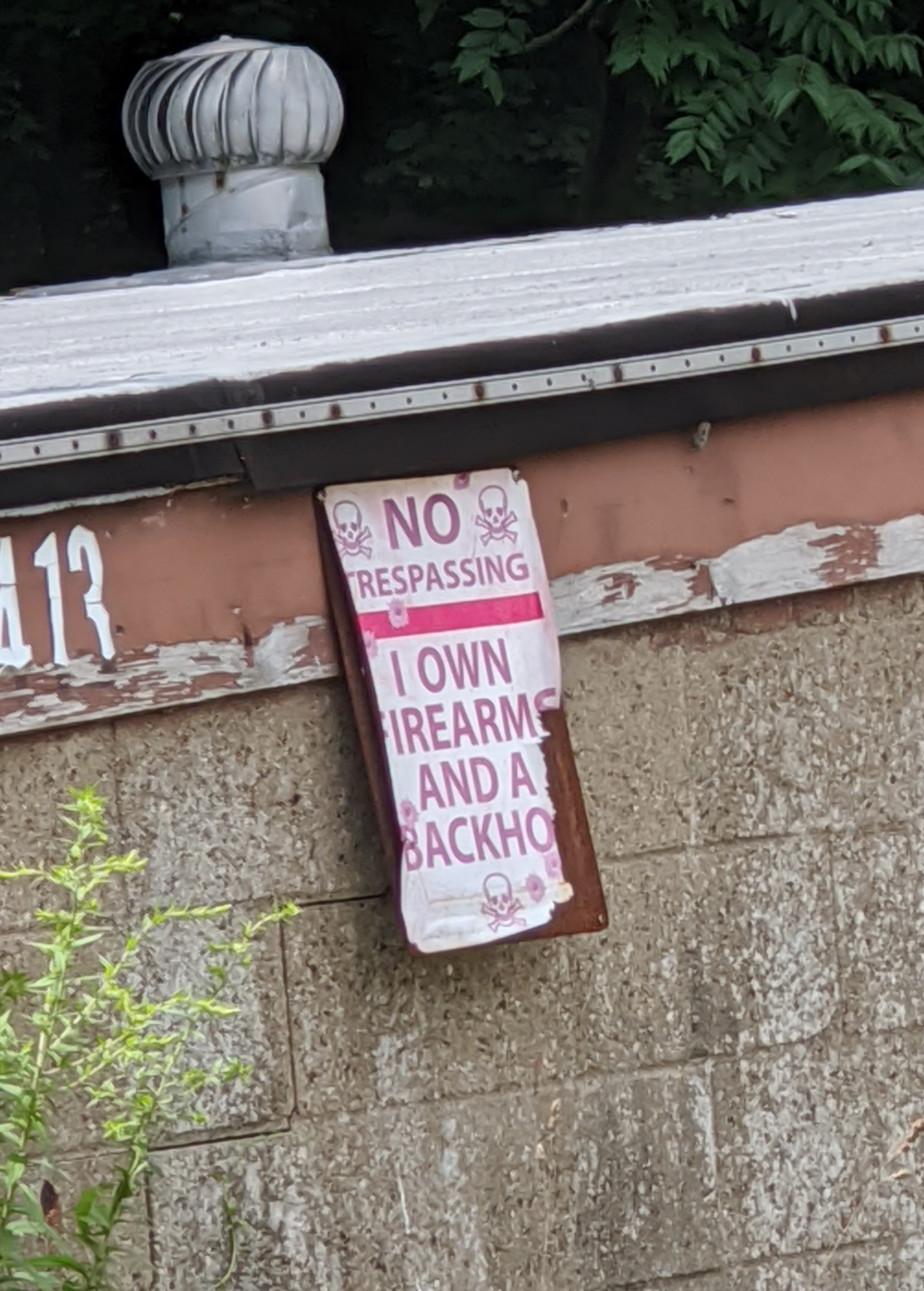
Fig. 3. A “no trespassing” sign on the outskirts of Clairton, along Miller Road, just off North State Street. Photograph by author, August 8, 2020.
Part of the answer, of course, is that I’m seeing a lot more of Pittsburgh as an Uber and Lyft driver than I ever did as a kid. And I am, it must be said, horrified.
The sign in figure 3 is not exceptional. I have white passengers get in my car wearing tee shirts that say, “We don’t call 9-1-1,” and that depict guns. Signs with a similar message may declare that property is “protected by the second amendment.” When you see enough of these signs, and enough of these tee shirts, and enough of these messages; when you see enough guns gratuitously displayed, ostensibly to honor veterans, but especially around certain neighborhoods; when you see the gun nuttery in the state legislature;[4] and when you see gun stores treated as essential businesses during a pandemic,[5] they just don’t seem to be joking anymore.
This page will cover what I consider important as I figure all this out. It is a work in progress, as are many of the photograph albums shared as evidence.
Racism and white supremacy
“Whatever the national disparities are in income, wealth, health and education, Pittsburgh is decidedly worse,” [Damon Young] wrote in a 2019 blog post at VSB. “Black nightlife here is a joke, the Black middle class is a whisper [and] Black political capital is a rumor.”
Pennsylvania was not a part of the Confederacy, but based on the number of Confederate battle flags around Pittsburgh, you could be forgiven for not knowing. I [Jason Togyer] once asked a Black colleague, new to the area, what his first impressions were. “Northern Alabama,” he said, quickly.
In the 2016 election, Allegheny County, where McKeesport is located, went for Clinton by fifty-six to forty percent, but the greater Pittsburgh media market as a whole went for Trump by almost the opposite margin, according to Nicholas. If yard signs, flags and other merchandise are reliable indicators, President Trump still has many enthusiastic supporters in the outer suburbs. In August, my wife spotted a roadside stand selling Trump souvenirs on Route 51 a half-hour south of McKeesport, and a full-fledged “Trump Store” has opened in Pittsburgh’s North Hills.
My own progressive and creative friends, for the most part, have either moved from places like McKeesport into the city of Pittsburgh itself (which is politically becoming a “blue” dot in a sea of “red”) or have fled Western Pennsylvania entirely.[6]
It didn’t take long for me to figure out that something was horribly amiss in race relations in Pittsburgh. As a critical theorist, I couldn’t help but notice the condition of neighborhoods where Blacks are most noticeable in contrast to the corresponding condition of neighborhoods where whites are most noticeable. Then I noticed that guns are prominently displayed gratuitously in or near places where Blacks live. And I noticed that the banners that go up in time for Memorial Day, which I initially thought honored war dead, but at least honor people who served in the military, nearly all honor whites, even in places where Blacks are most visible.
Please note that I take photographs as the opportunity arises, which is generally not when I am on my way to pick up a passenger or when I have a passenger in the car. This is a severe handicap, but rideshare driving is a terribly marginal proposition, so I have to focus first on that. As a consequence, the photographs available here are pretty much all taken in a hurry, meant to document rather than for artistic merit.
I intend to preserve metadata with photographs taken and it is my expectation that you should be able to view the location, date, and time along with other recorded details by clicking on the “info” button (a circled “i”) at upper right alongside each photograph in the galleries.
Gratuitous guns
If you are at peace, you should put away the guns. If you are not at peace, I don’t want to be around you. But what’s especially striking is that these weapons are so often located where poor people, especially Blacks, live; and almost never where rich people live.
Fig. 4. Gratuitous guns, mapped by author on Google Maps. Pins are locations from which photographs in the gallery were taken, not of the weaponry itself, and are therefore slightly off.

Fig. 5. This is aimed directly at the northwest corner of Carrick High School. Photograph by author, December 31, 2019.

Fig. 6. Outside a gun store on Lebanon Church Road in West Mifflin, directly across from the Allegheny County Airport. You cannot tell me this is for hunting. Photograph by author, September 26, 2019. This tank is no longer present.
In general, the ubiquitous display of guns at sites around Pittsburgh, almost always purportedly meant to honor those who have served in the military, raise three questions:
- Why, when so many memorials seem just fine without guns, are guns needed to honor people who have served in the military?
- Why are these guns so often, in fact in the vast majority of cases, located in or near areas (figure 4) where Blacks constitute a high proportion of the population?
- Why do the banners put up in time for Memorial Day overwhelmingly honor only whites who have served in the military, even in areas with high proportions of Blacks in the population?
This stinks to high heaven.
I began taking photographs of these displays and using the geotagging information to create a map (figure 1). The album and the map are publicly available.
Ethnic remnants
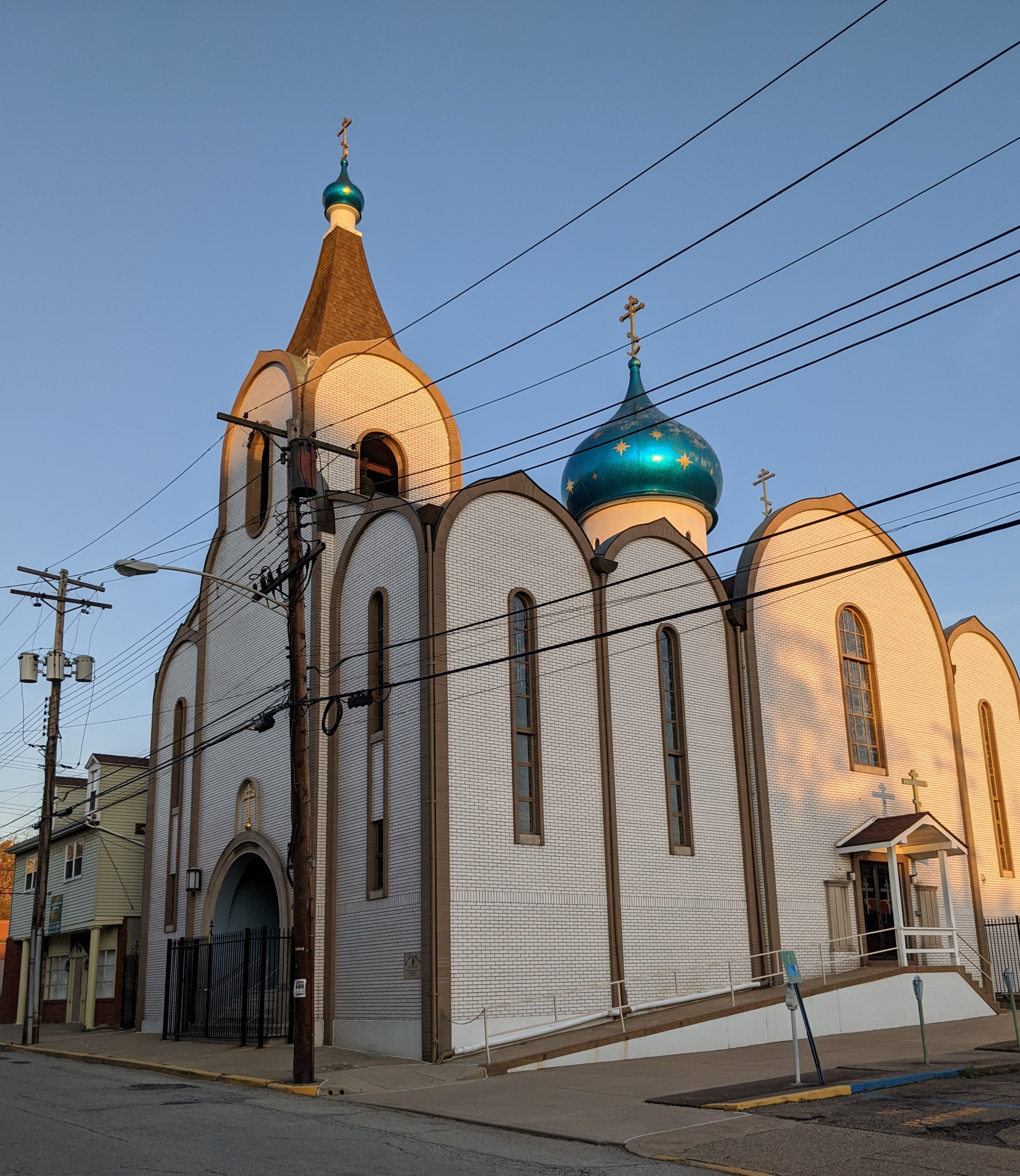
Fig. 7. A Russian Orthodox church in McKeesport. Photograph by author, May 13, 2020.
In Pittsburgh, I notice that European ancestry is celebrated to a far greater degree than I ever saw in California, and to the near or total exclusion of other identities. I also notice that many artifacts of ethnicity (for example, figure 5) are located in communities which do not appear to have corresponding populations. I’ve begun taking photographs of the evidence—strikingly to me, at least, you won’t find Black or American Indian identities celebrated in the same way. Again, this album is publicly available.
The abandoned
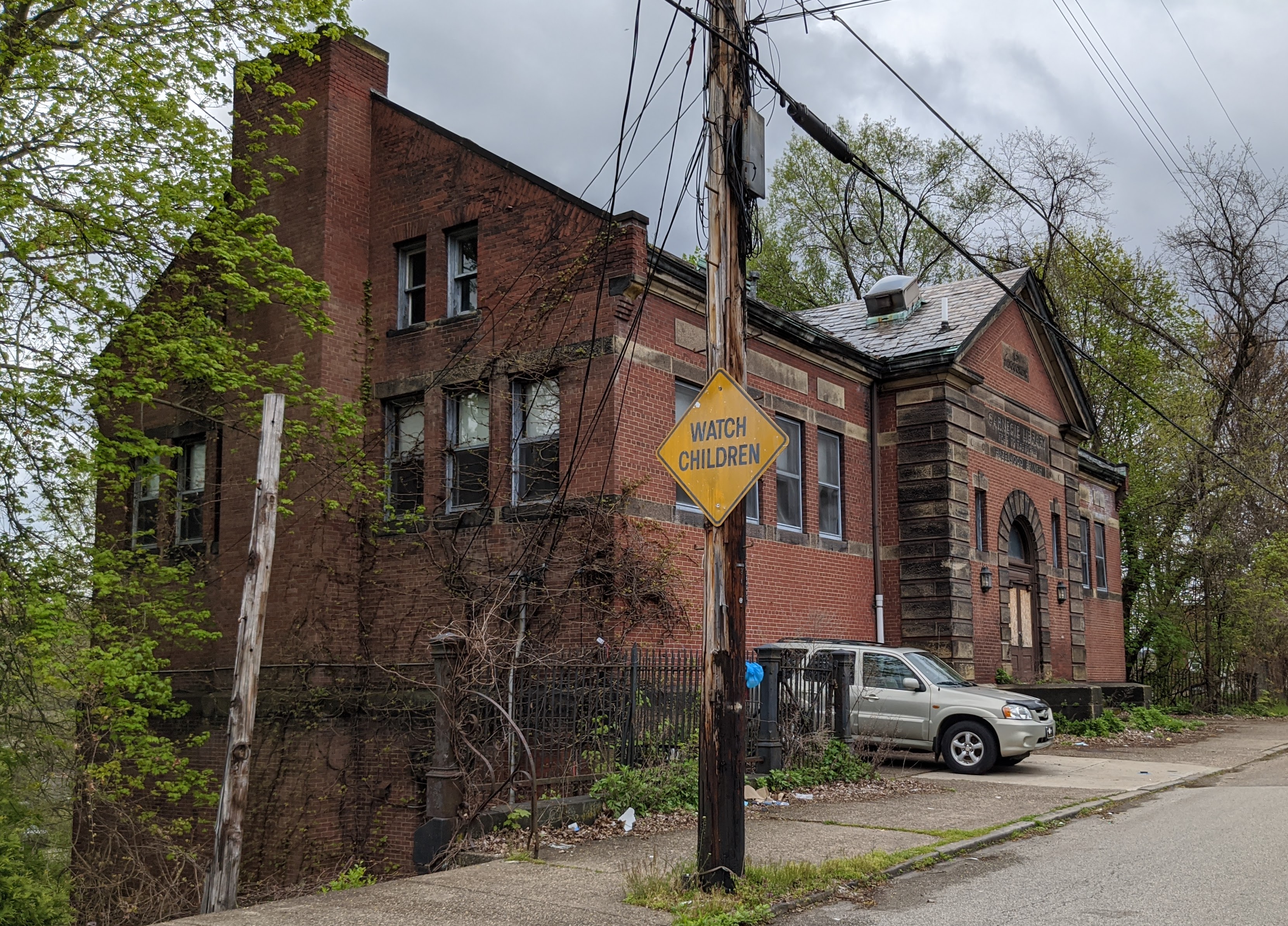
Fig. 8. A closed library branch in Hazelwood. Photograph by author, May 1, 2020.
Post-industrial decline is especially visible in Pittsburgh by what’s simply been abandoned and left to decay. I’ve begun taking photographs of this too, and the album is publicly available. Typically, but not exclusively, these are in poor neighborhoods, visibly correlating to a high proportion of Black residents.
White supremacy

Fig. 9. Five flags are on display in this small front yard in Clairton. Two U.S. Army flags are visible, along with a Confederate and U.S. flag. Obscured behind the telephone pole is a Betsy Ross flag.
A lot of folks in Pittsburgh proudly display Confederate flags. These are harder to photograph because the wind needs to be blowing strong enough that the flags are reasonably visible. I will also include here locations that folks—I will protect their identities—have told me are associated with white supremacy. This album is publicly available.
Theoretical work
There is, of course, theoretical work needed to tie all this together:
- The connection between “original sin,” misogyny, and white supremacism (written prior to my return to Pittsburgh)
- The banners and the guns: Flagrant racism in Pittsburgh
- Pittsburgh, race, and a threat to appropriated identity
- Keeping the poor, poor, even when they serve their country
- On patriotism
- Eviction and race war
- Hate, Pittsburgh Style
Driving
I don’t drive for Uber and Lyft because I want to. I do so because I have no choice.[7] But doing so has been a (thankfully not literally, so far, at least) crash course in Pittsburgh navigation and it has given me an opportunity to put the rest of this together. That said, driving here is a real challenge and I’d really rather be doing something else.[8]
External Resources
Jason Togyer’s writings, focusing on McKeesport, for the Columbia Journalism Review’s Year of Fear series, offer remarkable insight into a lot of what’s happened with a lot of Pittsburgh.
- February 27, 2020: Red Streets v. Blue Streets in McKeesport
- March 25, 2020: Fear and Loathing in the Time of Coronavirus
- April 21, 2020: Transparency in a time of pandemic
- May 22, 2020: In towns like McKeesport, the future was already precarious. Then came coronavirus.
- June 18, 2020: How Facebook has undermined communal conversation in McKeesport
- August 11, 2020: What will ‘normal’ mean after COVID-19?
- September 8, 2020: Will western Pennsylvania become a string of ghost towns?
- October 6, 2020: Will the sons of steelworkers see Trump’s COVID-19 behavior as strong, or reckless?
Togyer’s insights, however, mainly apply to post-industrial Pittsburgh. Problems precede industrial decline, as shown in a map of redlining hosted by the University of Richmond.
- [1]Pittsburgh City Paper, “Pittsburghese Dictionary: How to translate the Yinzer vocabulary,” April 25, 2019, https://www.pghcitypaper.com/pittsburgh/pittsburghese-dictionary-how-to-translate-the-yinzer-vocabulary/Content?oid=14838287↩
- [2]Pittsburgh City Paper, “Pittsburghese Dictionary: How to translate the Yinzer vocabulary,” April 25, 2019, https://www.pghcitypaper.com/pittsburgh/pittsburghese-dictionary-how-to-translate-the-yinzer-vocabulary/Content?oid=14838287↩
- [3]David Benfell, “Pittsburgh, Pennsylvania,” Irregular Bullshit, April 24, 2019, https://disunitedstates.com/2019/04/24/pittsburgh-pennsylvania/↩
- [4]Stephen Caruso, “Pro 2nd Amendment lawmakers want to let you carry a gun during an emergency,” Pennsylvania Capital-Star, July 7, 2020, https://www.penncapital-star.com/government-politics/pro-2nd-amendment-lawmakers-want-to-let-you-carry-a-gun-during-an-emergency/; Jon Delano, “Lawrence Co. Lawmaker Wants To Abolish Concealed Carry Gun Permits,” KDKA, May 7, 2019, https://pittsburgh.cbslocal.com/2019/05/07/aaron-bernstine-abolish-pennsylvania-concealed-carry-law/↩
- [5]Brian C. Rittmeyer, “Wolf allows gun stores to reopen on limited basis during coronavirus shutdown,” Pittsburgh Tribune-Review, March 25, 2020, https://triblive.com/local/regional/wolf-allows-gun-stores-to-reopen-on-limited-basis-during-coronavirus-shutdown/↩
- [6]Jason Togyer, “Will western Pennsylvania become a string of ghost towns?” Columbia Journalism Review, September 8, 2020, https://www.cjr.org/special_report/year-of-fear-mckeesport-census.php↩
- [7]David Benfell, “About my job hunt,” Not Housebroken, n.d., https://disunitedstates.org/about-my-job-hunt/↩
- [8]David Benfell, “About my job hunt,” Not Housebroken, n.d., https://disunitedstates.org/about-my-job-hunt/↩